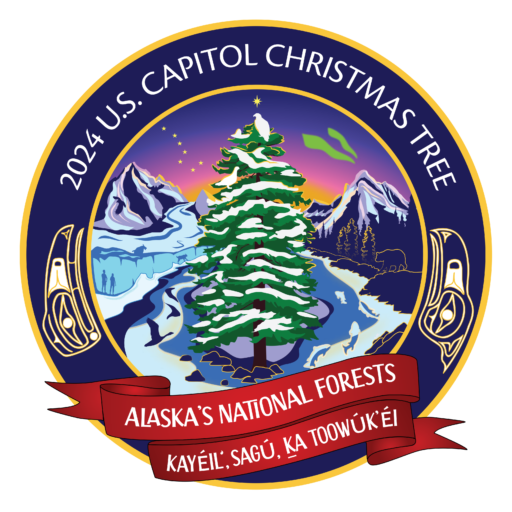Alaska’s National Forests
Alaska’s National Forests
Alaska’s National Forests are two of the Nation’s largest national forests, the Chugach and Tongass – traditional homelands of many Alaska Native peoples. The forests host tremendous natural beauty with active glaciers, complex ecosystems, diverse plant and animal life, and rich geologic history. The forests are stewarded to provide a multitude of uses that sustain the people who live here now and for future generations. The forests are rich with history, culture, and heritage from annual camping trips to traditions that are thousands of years old. Alaska’s National Forests are where nature, people, and tradition come together.
The Tongass National Forest
At nearly 17 million acres, the Tongass is the largest national forest in the United States, and the largest contiguous temperate rainforest in the world. Designated by Theodore Roosevelt in 1907, the Tongass is over 100 years old and a public treasure. This land of beauty, mystery, and untold natural riches covers most of southeast Alaska. Since time immemorial, the Tongass has nourished and sustained rich and unique human cultures. It continues to sustain Alaskan communities and culture today by creating jobs and bringing revenue through tourism, recreation, watersheds, fisheries, mining and timber. It also includes two national monuments, 13 campgrounds, 19 Wilderness Areas, over 140 reservable cabins and 450 miles of hiking trails. All of this while protecting and maintaining some of the most diverse and beautiful ecosystems in the country.
The Chugach National Forest
A breathtaking landscape in the heart of southcentral Alaska, the Chugach National Forest is the northernmost national forest in the Nation. It’s 48,000 acres of lakes and 1,800 miles of streams produce 66 million salmon a year or 11% of Pacific salmon production. The Chugach is popularly referred to as Alaska’s “backyard” with three geographic areas known for their pristine ecosystems and seemingly limitless outdoor recreation opportunities. The Kenai Peninsula is considered a hiking paradise and known for its world-renowned fishing on the Russian River. The Prince William Sound area, which makes up almost half of the forest, contains approximately 20 tidewater glaciers, temperate rainforest, and 3,500 miles of coastline. Finally, on the Copper River Delta, millions of waterfowl and shorebirds stop on their way to nesting grounds further north every year – it is considered one of the most essential shorebird habitats in the world.
Learn more about Alaska’s National Forests and follow along on Facebook.
